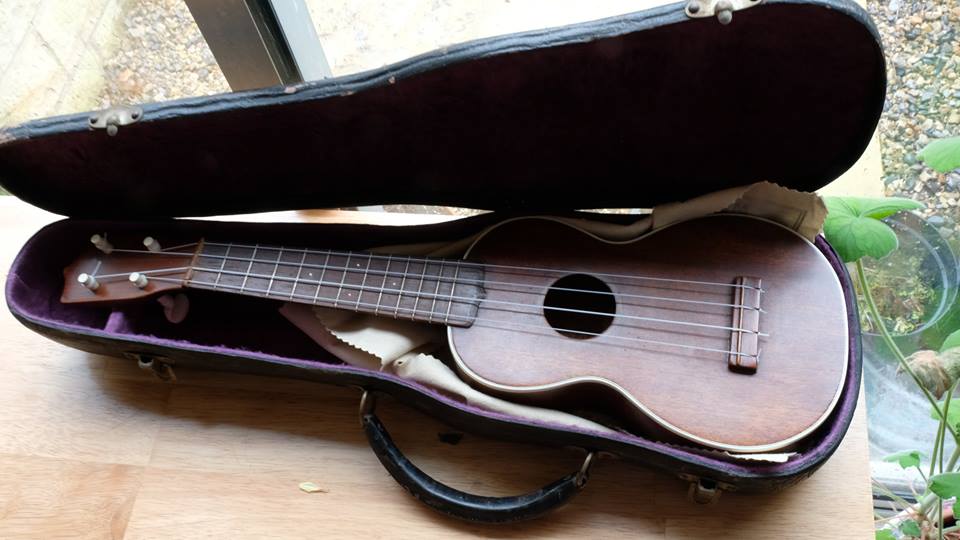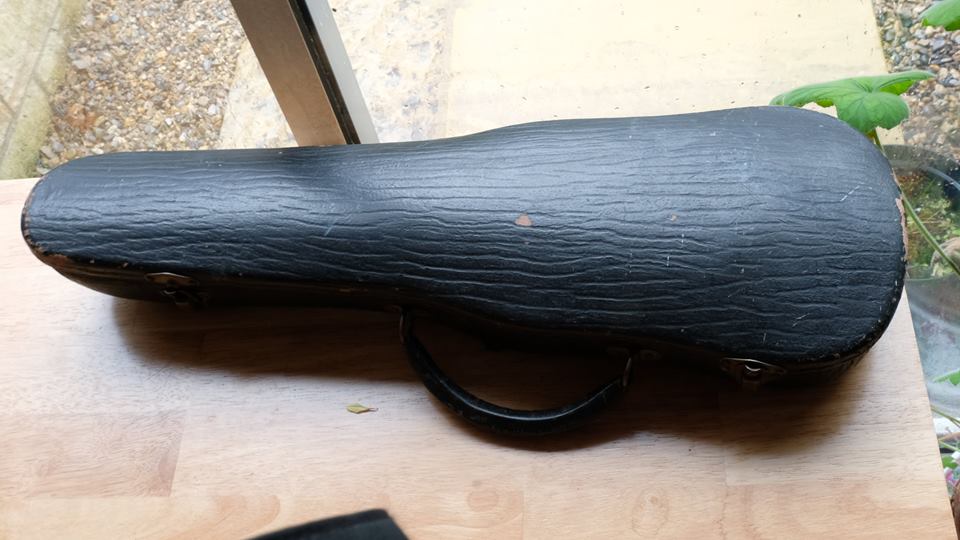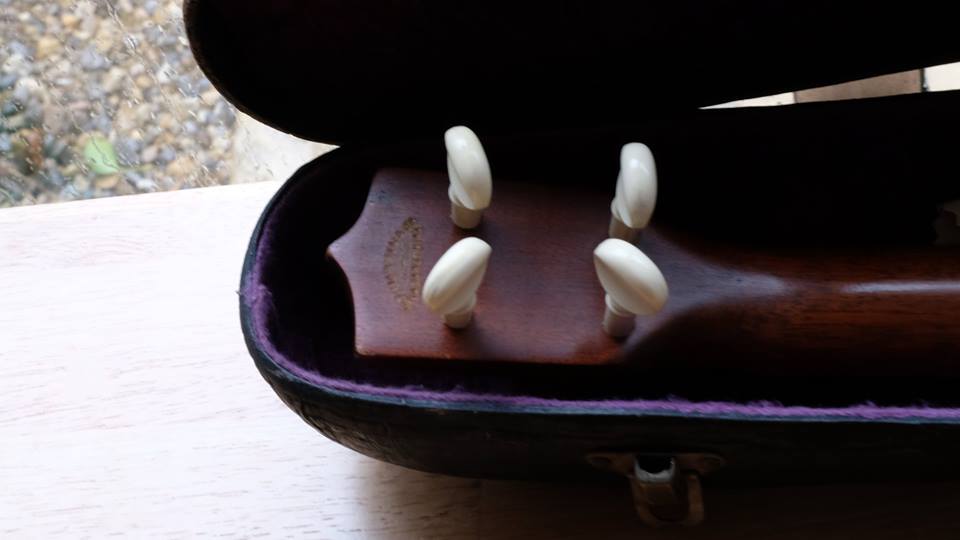Here are 6 of my favorite instruments from my collection. They are all very different, but exceptional in terms of playabilty and sounds.
Category: Instrument workouts
Musical practice regime by Nick Cody
Since starting The Small Change Diaries back in 2014 I have increasingly appreciated the importance of regular vocal and instrument practice. I have learned to develop a regime that without doubt has hugely helped in writing, recording and performing music.
Every week I have a two hour songwriting slot with Jessica Bowie and we’ve been doing this for almost three years now. Its funny to listen back to early sketches of tracks like “5 string man” and “Perfect Place” and to hear how these developed to be finally recorded and often played on BBC Radio. In each case these tracks benefitted massively from being worked up and such work ups require a great deal of time. The writing partnership with Jessica and other members of the band mean that we get something quite unique with four very different views. It continues to be a fascinating process watching songs unfold.
When we were asked to play the 2016 Lagoa Guitar Festival we rehearsed every week before heading to Portugal. Without doubt this helped with the final performance. When Adrian Knowles joined the band and became musical director, we moved up a level in terms of our musical development and playing with Adrian and Rich Ferdinando is like having Sly and Robbie as your rhythm section, just terrific.
On an individual basis I always make sure that I have instruments at hand where I live are often on stands rather than tucked away in cases. Sometimes I might pick up a uke, mandolin or guitar and discover a musical phrase that’s really interesting. These sketches are always recorded for future development. Sometimes an entire song can reveal itself in a very short period of time and sometimes such sketches might remain dormant for many months. The same applies with writing lyrics. Often a real life event might inspire a phrase or chorus for a future song. The secret in all instances is to record these sketches for future development.
In working on my solo material for an anticipated 2018 release, I am deliverately working in a different way. Some of the tracks are written on ukulele but I’m working out the vocal parts to piano, focussing 100% on the vocal delivery. I’m lucky to have an excellent vocal coach in Alice Higgins and her input has become invaluable in developing my own vocal delivery. It also means that I have a totally different sounding board for this seperate project and the music is quite different to the band material. Working only with a piano in rehearsal sessions is a fascinating experience, On the first track “He’s shooting blanks” I sing and for once don’t play any instruments. With this track I have Alice on piano, Adrian Knowles on double bass and Laurent Zeller on violin.
Regular practice and interaction with other musicians continues to spark all kinds of create ideas. Many who know me, know I’m a big fan of creating original music rather than covering existing material. Playing an all original set live is certainly not the safe option, but its a real joy to hear a song you have created receive great feedback. At the heart of this creative process is regular practice which means songs have the chance to mature and develop. Another key consideration is to have lessons with really excellent teachers. I’m lucky to have both Martin Simpson and Phil Doleman on hand. Martin remains a big inspiration on my playing and writing and I generally spend a few hours at his house talking about musical development. Phil is a wonderful tutor and “reality checker” especially when it comes to all manner of good advice when playing live. I’m lucky to be surrounded by such terrifc folks which help deveop my own musical pursuits.

Beyond the ukulele – instrument exploration
I never consider myself “a ukulele player” rather a musician who plays ukuleles along side many other instruments. Here are some of the ones I love and have or will use in recordings and live work. Please excuse the chat at the begining of the mandolin track, this was one of our “sketch ideas” where what you hear is the first time the others in the ensemble had heard this idea and it shows how quickly these guys can pick up a musical thread and run with it which is why they are so great to play with!
As much as I love ukuleles, I’m not a ukulele evangelist and have a great love of all instruments that help produce really sonically great music. Bill Collings, Stefan Sobell are great makers and Gibson despite its recent history has had some periods where they made really excellent instruments.
Each instrument inspires a different way of playing and I’m a great believer that learning and playing a wide range of instruments only makes for becoming a more skilled artist. These days I’m mostly looking for how things sound regardless of whether I have immediately play what is in front of me, I’ll figure that out later.
 After signing off on the second Small Change Diaries album due for release in November (digital world wide release in Oct) I have started working on some solo material with the addition of some new musicians as well as old colleagues. The first track is now fully mastered and sounds great. It also doesn’t have me playing any instruments, I leave that up to my colleagues who supply piano, double bass and violin. This is a different direction to The Small Change Diaries and the solo material is planned for release in 2018.
After signing off on the second Small Change Diaries album due for release in November (digital world wide release in Oct) I have started working on some solo material with the addition of some new musicians as well as old colleagues. The first track is now fully mastered and sounds great. It also doesn’t have me playing any instruments, I leave that up to my colleagues who supply piano, double bass and violin. This is a different direction to The Small Change Diaries and the solo material is planned for release in 2018.
I have always had a great love of music and am fortunate to know some really talented musicians who have helped shape my own ideas on musical direction. Those who know me also appreciate that I have a love for original music and tend to speak my mind while also appreciating that others may have different views. As a collector of instruments I have over 25 ukuleles, a great electric and acoustic guitar collection and one off instruments that include a Sobell mandola, Gibson mandolin featured here, National dobro previously owned by Martin Simpson, walking bass dulcimer from Austin Texas and other items.
Life The Basic Manual Video Platform
The Magic of Stefan Sobell
Below is a quick workout with a Stefan Sobell African Blackwood New World guitar. I first came across Stefan’s instruments at a Martin Simpson workshop a number of years ago. I have always enjoyed Martin’s sound and for many years he exclusively used Sobells. My first Sobell was a model 0 which I bought second hand and then after hearing Martin’s African Blackwood New World. Stefan made three of these, Jackson Browne has the other one.
I commissioned one myself and have never heard any other guitar that sounds anything like this. After playing mostly ukes, it seems HUGE.
Since then I have also bought a mandola from Stefan which is also terrific. Stefans instruments are custom hand builds and quite unlike anything else except Takahiro Shimos instruments, although Stefan doesn’t build ukuleles.
Martin 1920s Soprano Ukulele from New York
I just returned from New York and met up with my good friend Zeke Schein from Matt Umanov Guitars. Zeke sold me my first ever uke, a Collings pre production concert. This one purchase was a trigger for everything that followed and without it there would be no “Small Change Diaries” no 40+ songs written, no live gigs in the UK and overseas!
On this trip Zeke mentioned a rare Martin 1920s soprano ukulele that was for sale, described below
1920s Martin Style 2 Uke
An extremely early Martin ukulele and one of their higher-grade and rarer models, from 1921 or possibly even earlier. According to correspondence from Tom Walsh, co-author of the fabulous and most authoritative book on the subject The Martin Ukulele, “The lighter colored nut and saddle suggest it is early 20s or earlier, but the real giveaway is the position marks at the 5-7-9th frets. Martin switched to inlays at frets 5-7-10 by 1921 at the latest. Another sign of age is the fact that it never had patent pegs. The style 2 ukuleles got patent pegs in 1922″. In absolutely beautiful condition with no cracks or repairs anywhere and none of the usual signs of overly enthusiastic playing. The bar frets are original with virtually no wear. It has white celluloid tuning pegs, which are most likely much older very professional replacements, to match the white celluloid body bindings.
I have always wanted to own a Martin instrument, but to date have never been totally convinced. There are two notable exceptions, the first being a guitar Martin Simpson showed me and now this 1920s Martin soprano. I’m not an advocate of “old = great” but this particular ukulele which is in excellent condition sounds very unlike anything else I have played to date. It has a great tone and plays really well. Its also almost 100 years old and will be used in the studio for future recordings. It also comes with an original case which is like a violin case. I have never seen a 1920s Martin soprano before and certainly not one in such great condition. Its a wonderful sounding instrument and a joy to play.



Zeke is also the author of a soon to be released book “Portrait of a Phantom”
Cocobolo super soprano ukulele worksout
Here I am putting the Cocobolo Super soprano through its paces with Worth Brown strings